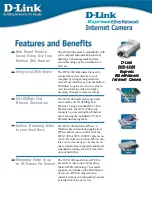
Genie_TS_Series GigE Vision Camera
Operational Reference
63
Changes in lighting will require changes to multi-slope parameters to maintain maximum
optimal sensor dynamic range, for a given exposure time.
Exposure Time
100%
max DN
multiSlopeKneePositionY
as a
percentage of Full Well
multiSlopeKneePositionX
as a
percentage of Exposure Time
100% of Set Exposure Time
Example use of Multi-Slope Mode
(3)
(2)
(1)
Curve (1): Represents an overexposed pixel that the user chooses to ignores. The multi-slope
feature acts to reduce its sensitivity until the
multiSlopeKneePositionX
setting, but these pixels
will still saturate.
Curve (2): Represent pixels that the user requires the multi-slope feature to act on. At the
multiSlopeKneePositionY
setting, the sensitivity is reduced until the
multiSlopeKneePositionX
setting where sensitivity returns to normal. With proper setup the full image dynamic range is
captured for the selected gray levels, but with an accepted nonlinear range.
Curve (3): Represents a pixel that is not overexposed for the set exposure time. Therefore
these dark pixels do not cross the
multiSlopeKneePositionY
setting, and their sensitivity
remains linear.
The following image shows how the Multi-Slope feature is used to extend the dynamic range of the
sky area which was overexposed in the previous image. For the record, this sample image was
taken with an Exposure Time=800µs,
multiSlopeKneePositionY
=30%, and
multiSlopeKneePositionX
=50%, but each imaging setup will be different.
















































